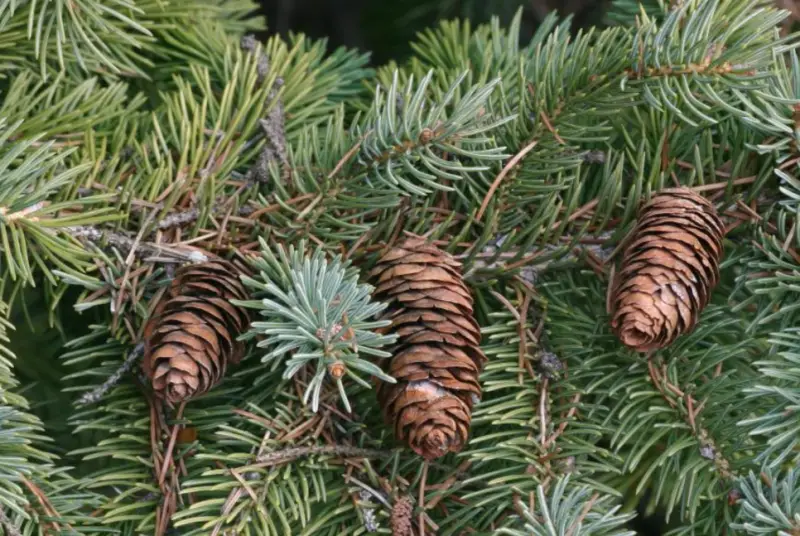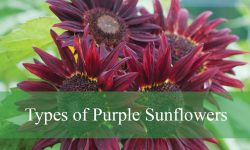The Black Hills Spruce (Picea glauca var. densata) is a dense, slow-growing evergreen tree that is native to North America. This tree is highly valued for its cold tolerance, aesthetic appeal, and adaptability to various soil types. It is an excellent choice for landscaping, windbreaks, and wildlife habitats.
In this comprehensive guide, you will learn everything you need to know about caring for and growing Black Hills Spruce, along with ultimate tips to ensure a healthy and thriving tree.
Characteristics of Black Hills Spruce

Appearance
The Black Hills Spruce (Picea glauca ‘Densata’) is a dense, pyramidal evergreen tree that retains its lush green color year-round. This slow-growing conifer features short, stiff, and slightly curved needles that are deep green, making it a visually striking addition to landscapes. Its symmetrical shape and compact branching structure contribute to its popularity in ornamental and windbreak plantings.
- Height: At full maturity, the Black Hills Spruce reaches a height of 40 to 60 feet, though in ideal conditions, some specimens may grow slightly taller over a long lifespan.
- Spread: The tree develops a relatively narrow, conical crown, typically spreading between 15 to 25 feet wide. This compact form makes it a great choice for tight spaces compared to broader evergreens.
- Foliage: Its dark green, needle-like leaves measure about ½ to ¾ inch in length and have a slightly waxy texture. Unlike some other spruce species, the needles of the Black Hills Spruce are not excessively sharp, making them more tolerable to handle.
- Growth Rate: Considered slow-growing, this tree adds only about 12 inches per year under optimal conditions. However, its steady growth contributes to its dense and robust form, making it an excellent long-term investment for landscapes.
- Lifespan: With proper care, the Black Hills Spruce can live up to 200 years, making it one of the longest-living conifer species in North America.
Hardiness Zones
The Black Hills Spruce is well-adapted to cold climates and is known for its exceptional hardiness.
- USDA Zones: 2-6, meaning it can thrive in a wide range of northern and temperate climates.
- Cold Tolerance: This spruce species is highly resistant to harsh winter conditions, enduring extreme temperatures as low as -50°F (-45°C) without suffering significant damage. This makes it an excellent choice for regions with severe winters.
Soil and Water Requirements
The Black Hills Spruce is adaptable to various soil types, provided they offer good drainage.
- Soil Preference: Thrives in well-draining soils, including loamy, sandy, or clay soils. It is particularly well-suited for areas with moderate moisture retention and does not tolerate prolonged waterlogging.
- pH Range: Prefers slightly acidic to neutral soil conditions, with an ideal pH range of 5.5 to 7.5.
- Water Needs: Requires moderate moisture levels; it grows best in moist but well-drained soil. While it can tolerate occasional drought once established, young trees should be watered regularly to encourage healthy root development.
Sunlight Needs
Sun Exposure: The Black Hills Spruce flourishes in full sun, requiring at least 6 hours of direct sunlight daily. Insufficient sunlight may result in slower growth, sparse foliage, and a less symmetrical form.
How to Grow Black Hills Spruce
Choosing the Right Location
Selecting the ideal planting site is crucial for the long-term health and growth of a Black Hills Spruce. Here are some key factors to consider:
- Sunlight: Choose a location that receives full sunlight, meaning at least 6 hours of direct sun daily. While Black Hills Spruce can tolerate partial shade, it thrives best in open, sunny areas.
- Space Considerations: Ensure there is ample space for the tree’s mature height (40-60 feet) and spread (15-25 feet). Avoid planting too close to structures, fences, or power lines.
- Soil Drainage: Avoid areas with poor drainage or those prone to waterlogging, as excessive moisture can lead to root rot. However, avoid sites that are too dry, as prolonged drought stress can hinder growth.
- Air Circulation: Good airflow around the tree helps prevent fungal diseases like needle cast. Avoid overcrowded planting areas where air movement is restricted.
Planting Black Hills Spruce
Best Time to Plant
The optimal planting time depends on climate conditions, but generally:
- Early spring (once the ground has thawed but before extreme heat sets in) is an excellent time to plant, allowing roots to establish before summer.
- Late fall (after leaf drop but before the ground freezes) is another good option, giving the tree a chance to acclimate before winter dormancy.
- Avoid planting during the height of summer, as extreme heat and drought conditions can stress newly planted trees. Similarly, planting in frozen winter soil will hinder root development.
Step-by-Step Planting Guide
- Dig a Hole:
- Dig a hole that is twice as wide as the root ball but only as deep as the root ball itself.
- This ensures the roots have plenty of loose soil to spread into without being buried too deep.
- Prepare the Soil:
- If the soil is poor or compacted, mix in organic compost or well-rotted manure to improve aeration and nutrient retention.
- Avoid using too much fertilizer, as excessive nitrogen can stress young trees.
- Position the Tree:
- Carefully place the tree into the hole, ensuring that the top of the root ball is level with the surrounding ground.
- Do not plant too deep, as this can lead to poor root development and potential rotting.
- Fill and Compact the Soil:
- Backfill the hole with the original soil, gently pressing down to eliminate air pockets.
- Avoid compacting the soil too tightly, as roots need space to grow and access oxygen.
- Water Thoroughly:
- Give the newly planted tree a deep soak to help settle the soil and encourage strong root establishment.
- Continue watering regularly, especially in the first year, to support healthy growth.
- Mulch for Moisture Retention:
- Apply a 2-3 inch layer of organic mulch (such as wood chips or bark) around the base of the tree.
- Keep mulch a few inches away from the trunk to prevent moisture buildup and potential rot.
- Mulching helps retain soil moisture, suppress weeds, and regulate soil temperature.
Caring for Black Hills Spruce
Proper care ensures that Black Hills Spruce (Picea glauca ‘Densata’) remains healthy, resilient, and visually appealing for decades. Below are essential care guidelines to support its growth.
Watering Requirements
For Newly Planted Trees:
- Water 2-3 times per week for the first month after planting to promote root establishment.
- Ensure each watering session is deep and thorough, reaching the roots rather than just wetting the surface.
- Reduce frequency gradually after the first month, depending on rainfall and soil conditions.
For Established Trees:
- Deep watering is needed every 7-10 days during dry periods to maintain soil moisture.
- The tree is moderately drought-tolerant once mature, but consistent moisture improves growth.
- Water at the base of the tree, avoiding overhead watering to prevent fungal diseases.
- Avoid overwatering, as excessive moisture can lead to root rot, a serious issue in poorly drained soils.
Fertilization
When to Fertilize:
- The best time to apply fertilizer is early spring, just before new growth starts.
- Avoid fertilizing in late summer or fall, as this can promote tender growth that may be damaged by winter cold.
Best Fertilizer:
- Use a balanced slow-release fertilizer, such as 10-10-10 (nitrogen-phosphorus-potassium) for general growth.
- Alternatively, a 12-6-4 formula can be used to enhance needle color and overall vigor.
- Organic options, such as compost or well-rotted manure, can also be used to improve soil quality over time.
Application Method:
- Spread fertilizer evenly around the root zone, staying a few inches away from the trunk to prevent burning.
- Lightly rake the fertilizer into the top layer of soil for better absorption.
- Water thoroughly after applying fertilizer to help nutrients penetrate the root system.
Pruning and Maintenance
Minimal Pruning Required:
- Black Hills Spruce naturally grows in a dense, symmetrical shape, requiring little to no pruning.
- Only remove dead, damaged, or diseased branches to maintain overall tree health.
Best Time to Prune:
- Pruning should be done in late winter or early spring, when the tree is dormant.
- Avoid heavy pruning during the growing season, as this may stress the tree.
Shape Maintenance:
- Avoid excessive cutting, as this can disrupt the natural conical form.
- Do not top the tree (cutting off the central leader), as this can lead to weak, irregular growth.
- If needed, light shaping can be done by selectively trimming small branches to enhance symmetry.
Pest and Disease Management
Common Pests
Black Hills Spruce is susceptible to several common pests, including aphids, spruce spider mites, and bagworms.
Aphids are small, sap-sucking insects that cluster on new growth, causing needle discoloration and stunted development. They also secrete a sticky substance called honeydew, which can lead to sooty mold growth. Controlling aphids involves spraying the affected areas with insecticidal soap or neem oil and encouraging natural predators like ladybugs.
Spruce spider mites thrive in dry conditions and can cause needles to turn yellow or brown before falling off. These microscopic pests often go unnoticed until damage becomes severe. Increasing humidity around the tree, rinsing branches with water, and applying miticides when necessary can help manage infestations.
Bagworms are caterpillars that construct protective silk bags from tree foliage and gradually defoliate branches. To control bagworms, manual removal of their cocoons is the most effective method. However, in larger infestations, biological insecticides such as Bacillus thuringiensis (Bt) can be used to target young larvae before they cause significant harm.
Regular monitoring and early intervention are key to preventing these pests from weakening Black Hills Spruce.
Common Diseases
Black Hills Spruce can be affected by several common diseases, including needle cast disease, Cytospora canker, and root rot, which can weaken the tree if left untreated.
Needle cast disease is a fungal infection that causes needles to turn yellow, then brown, before eventually falling off. It typically starts on the lower branches and spreads upward. This disease thrives in humid conditions and poor air circulation. To prevent and manage it, apply fungicide treatments in early spring and ensure proper spacing between trees to improve airflow.
Cytospora canker is another serious fungal disease that affects stressed or older trees. It appears as white, resinous oozing from infected branches, which later dry out and die. To reduce the risk, it’s crucial to avoid wounding the tree, as injuries provide entry points for the fungus. If infection occurs, promptly remove infected branches using sterilized pruning tools to prevent further spread.
Root rot is a severe condition caused by overly wet or poorly drained soil, leading to wilting, yellowing needles, and stunted growth. Infected roots become soft and dark, losing their ability to absorb nutrients and water. To prevent this, it’s essential to ensure well-draining soil and avoid overwatering, keeping moisture levels balanced.
Landscaping Uses of Black Hills Spruce
Windbreak and Privacy Screen
- Excellent for creating windbreaks in rural and suburban areas.
- Dense foliage provides natural privacy screening.
Ornamental Tree
- A beautiful addition to gardens and parks due to its symmetrical shape and vibrant green needles.
- Complements other evergreens and flowering plants in landscaping.
Wildlife Habitat
- Provides shelter for birds and small mammals.
- Produces seeds that attract wildlife.
Ultimate Tips for Growing a Healthy Black Hills Spruce
- Choose a Suitable Planting Site: Ensure adequate sunlight and well-draining soil.
- Water Wisely: Keep the soil moist but avoid overwatering.
- Mulch for Moisture Retention: Apply organic mulch to maintain soil moisture and prevent weeds.
- Fertilize Annually: Provide essential nutrients with a slow-release fertilizer.
- Monitor for Pests and Diseases: Inspect regularly and take early action if needed.
- Protect from Extreme Conditions: Use burlap wraps for young trees in harsh winter conditions.
- Space Trees Properly: Maintain at least 15 feet between trees for optimal growth.
- Avoid Heavy Pruning: Minimal pruning is best to retain the tree’s natural shape.
- Ensure Proper Air Circulation: Prevent fungal infections by planting in open spaces.
- Consider Companion Planting: Pair with shrubs or perennials that thrive in similar conditions.
Conclusion
The Black Hills Spruce is an excellent evergreen tree for various landscapes, offering beauty, resilience, and practical benefits. With proper care and maintenance, this tree can thrive for generations, enhancing your outdoor space with its lush foliage and year-round appeal.
By following this ultimate growing guide, you can ensure your Black Hills Spruce remains healthy and vibrant for many years. Whether you use it for windbreaks, privacy screens, or ornamental landscaping, this tree is a valuable addition to any garden or property.
Start growing your Black Hills Spruce today and enjoy its timeless beauty and ecological benefits!






